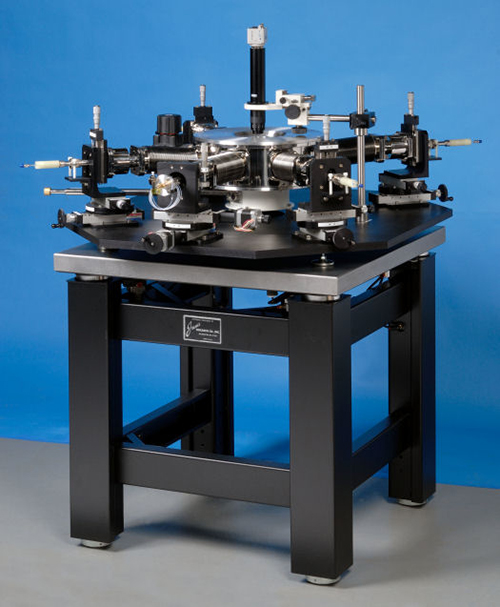Custom probe stations
In addition to our extensive line of standard cryogenic probe station products, Lake Shore can work with you to design a custom probe station to meet your specific experimental requirements. See below for some examples of custom products.
Contact us to discuss your particular custom cryogenic probe station.
Examples of custom probe stations
Room temperature vacuum probe station
- 300 K to 500 K (675 K option)
- 2 in diameter sample holder with standard arm and vision options
Miniature, transportable vacuum chamber
Lake Shore also offers a miniature, transportable sample vacuum chamber capable of maintaining a sample in vacuum during transportation via an atmosphere environment. The vacuum chamber can be used for transferring wafer/substrates under vacuum from a glove box with a special environment into a vacuum or cryogenic micro-manipulated probe station (or into a vacuum chamber) and back into the glove box after testing, measurements, or preparations. This transportable vacuum chamber protects the wafer/substrates from atmospheric contamination both on loading and unloading.
Unlike a common vacuum load-lock, the vacuum chamber has the following features and benefits:
- Typical sizes of 50 mm diameter and 25 mm thickness
- No gate valves required
- Very convenient and easy operation
- Low cost
- Mount the transportable sample mount without increasing base temperature of the cryogenic probe station


-no-wires.jpg?Status=Master&sfvrsn=4ac44a0e_9)
